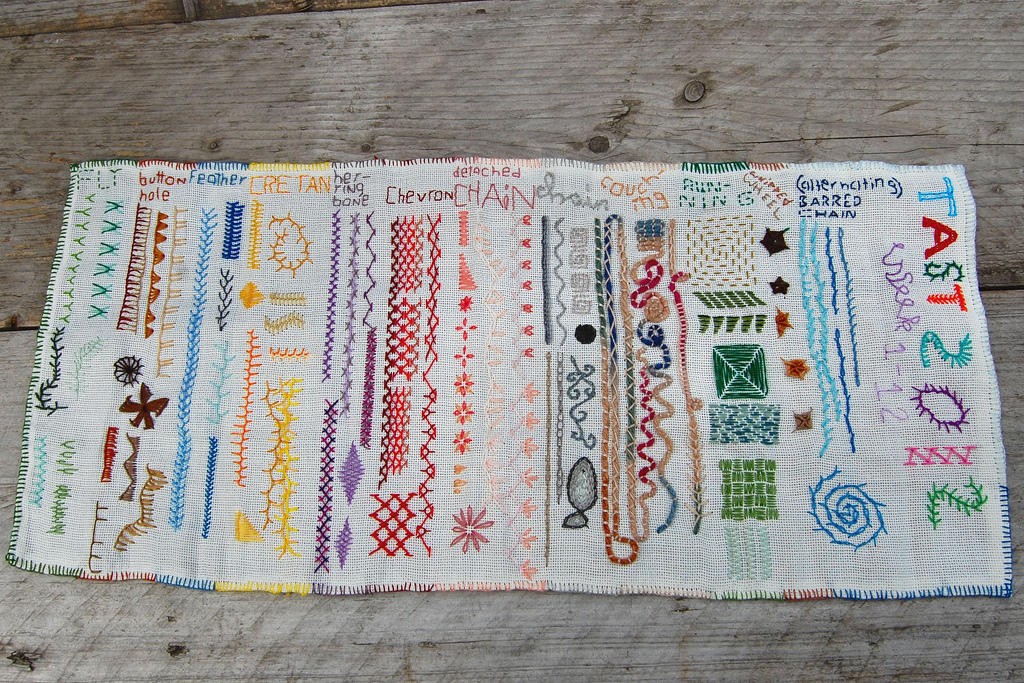The reason embroidery is not simply colourful plain sewing is that is uses more than the three or four stitches of hand sewing. Most embroidery stitches are decorative in their own right, while others best show off their advantages when colouring in a surface on a motif.

Simple Embroidery Stitches and Techniques
It is important to know the difference between embroidery stitches and embroidery techniques.
Embroidery Stitches
An embroidery stitch is a specific way of pulling the needle through the fabric so that the thread lies on it in a certain way. There are line stitches that move along a straight (or curved) line, surface stitches for covering surfaces with colour, and even stitches that require the needle to enter and leave the fabric several times before a stitch is complete (cross-stitch, laid-and-couched stitches, etc.)
Embroidery Techniques
An embroidery technique is a specific style of embroidery. It uses specific stitches, motifs or even colours for a recognisable visual result.
Some types of embroidery techniques are:
- Whitework: openwork or pulled-thread embroidery and surface stitches done in white against a white background. Whitework techniques used to be very popular for altar cloths during Lent; today they are used for linens, handkerchiefs and doilies.
- Or nué: couching stitches in coloured silk over laid gold thread to create scenes and patterns
- Crewel work: colourful, usually floral motifs over a large surface
- Blackwork: patterns in black thread, usually in Holbein https://hands-across-the-sea-samplers.com/double-running-or-the-holbein-stitch/ stitch.
Learn our best tips for embroidery for beginners...
Drawing with Needles: Types of Stitches and Embroidery Work
Embroidering a scene or motif onto cotton or linen can be likened to drawing. First you need your line drawing, then you can colour it in.
For advanced artists there are more complicated techniques such as stumpwork or couching stitches; for those who like paint-by-numbers, there is counted work.
Line Stitches
Line stitches are used for contours and simple decoration, along the edge of a tablecloth, sleeve cuff or shirt neck.
However, just because you are sewing in a line doesn't mean you can’t fill in surfaces with a stem stitch or a chain stitch - many early pieces of embroidery do just that.
A few simple line stitches are:
- Stem stitch:
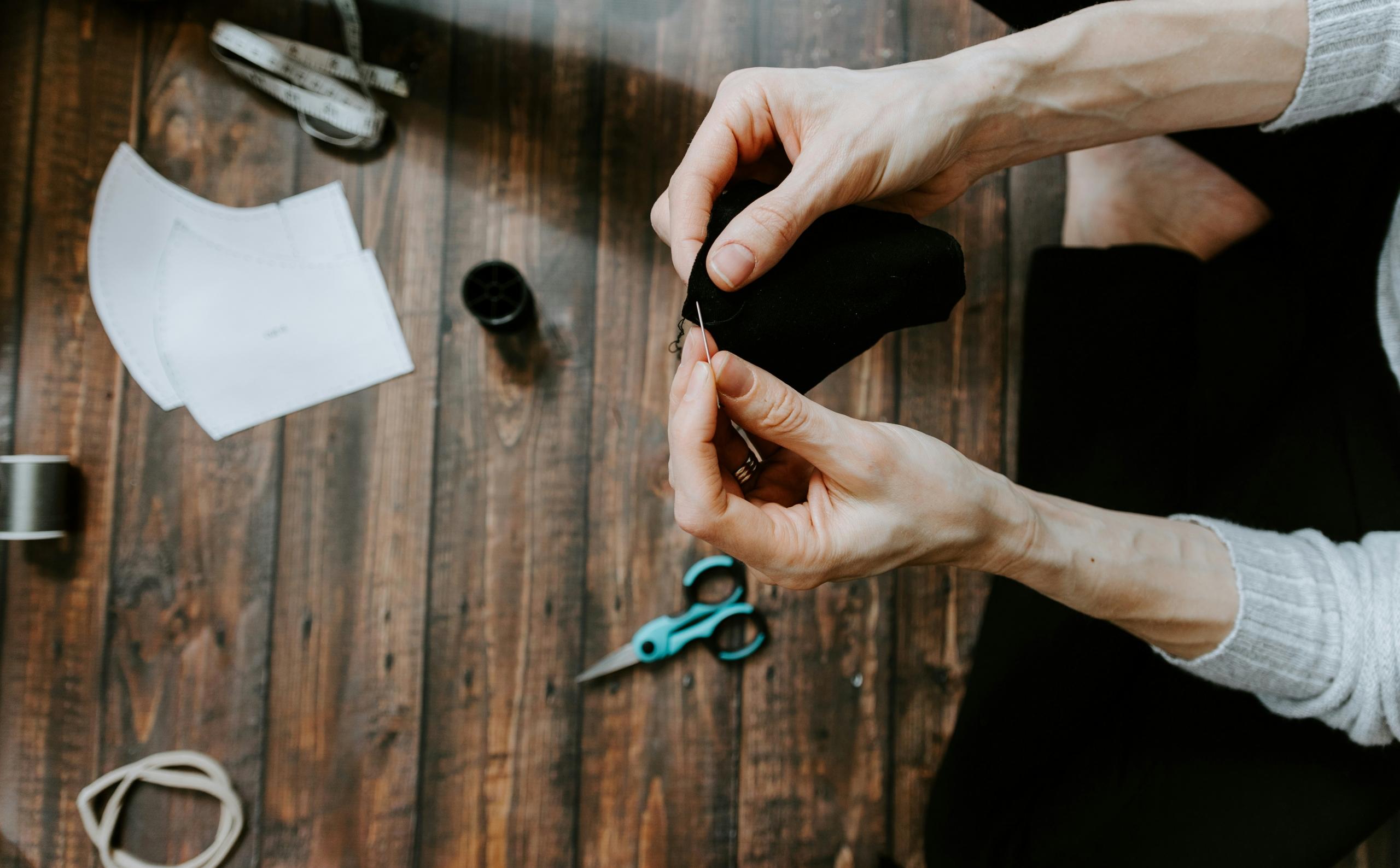
if you look at a hand-sewn backstitch from behind, you will see a stem-stitch. But unless you want to embroider all your work on the reverse, The Spruce has a simple guide.
Stem stitch takes its name from flower stems, for which it is often used in needle painting and crewel work.
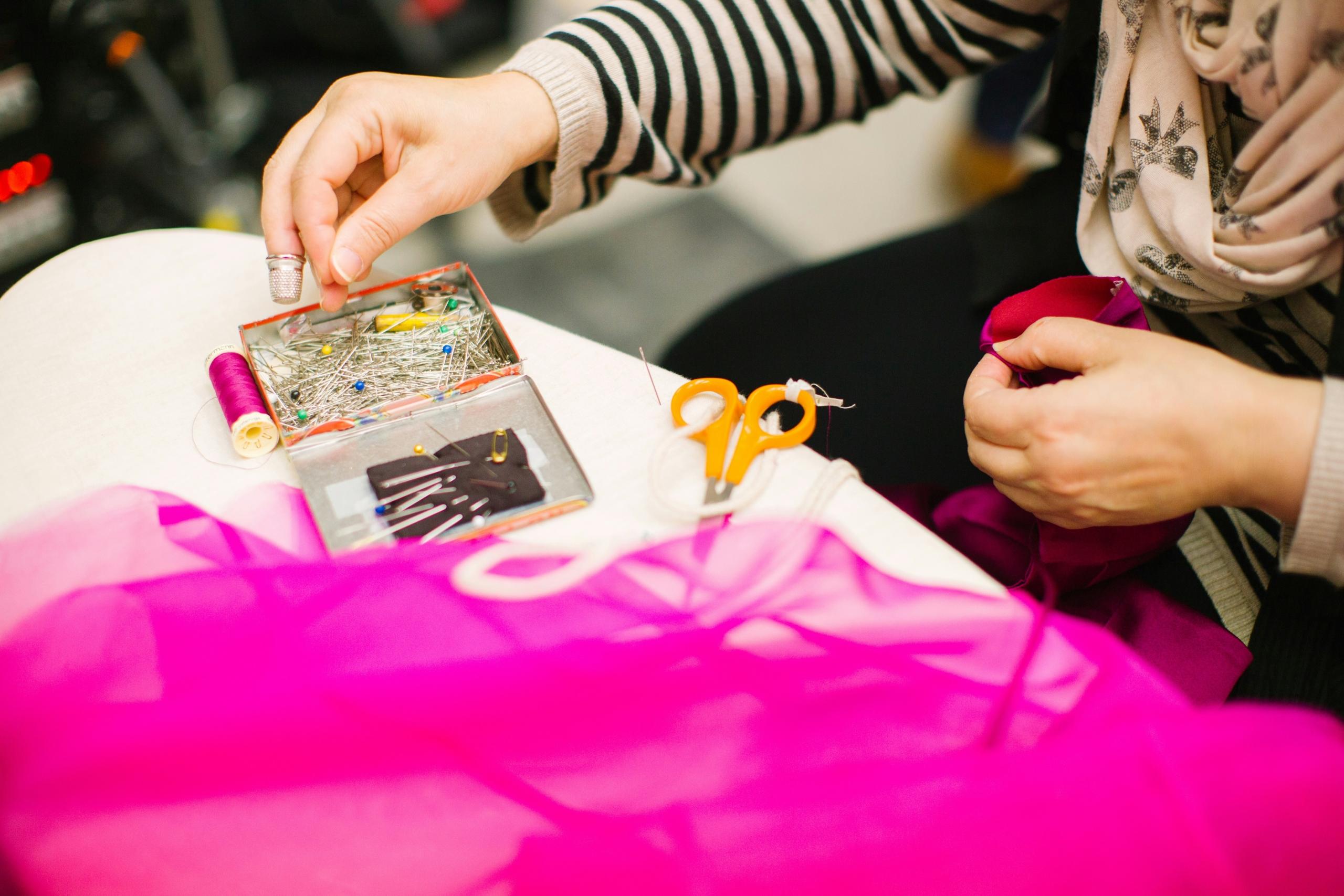
A chain stitch will be worked just on either side of a line. You can make it more or less open depending on how far apart you enter and exit your needle.
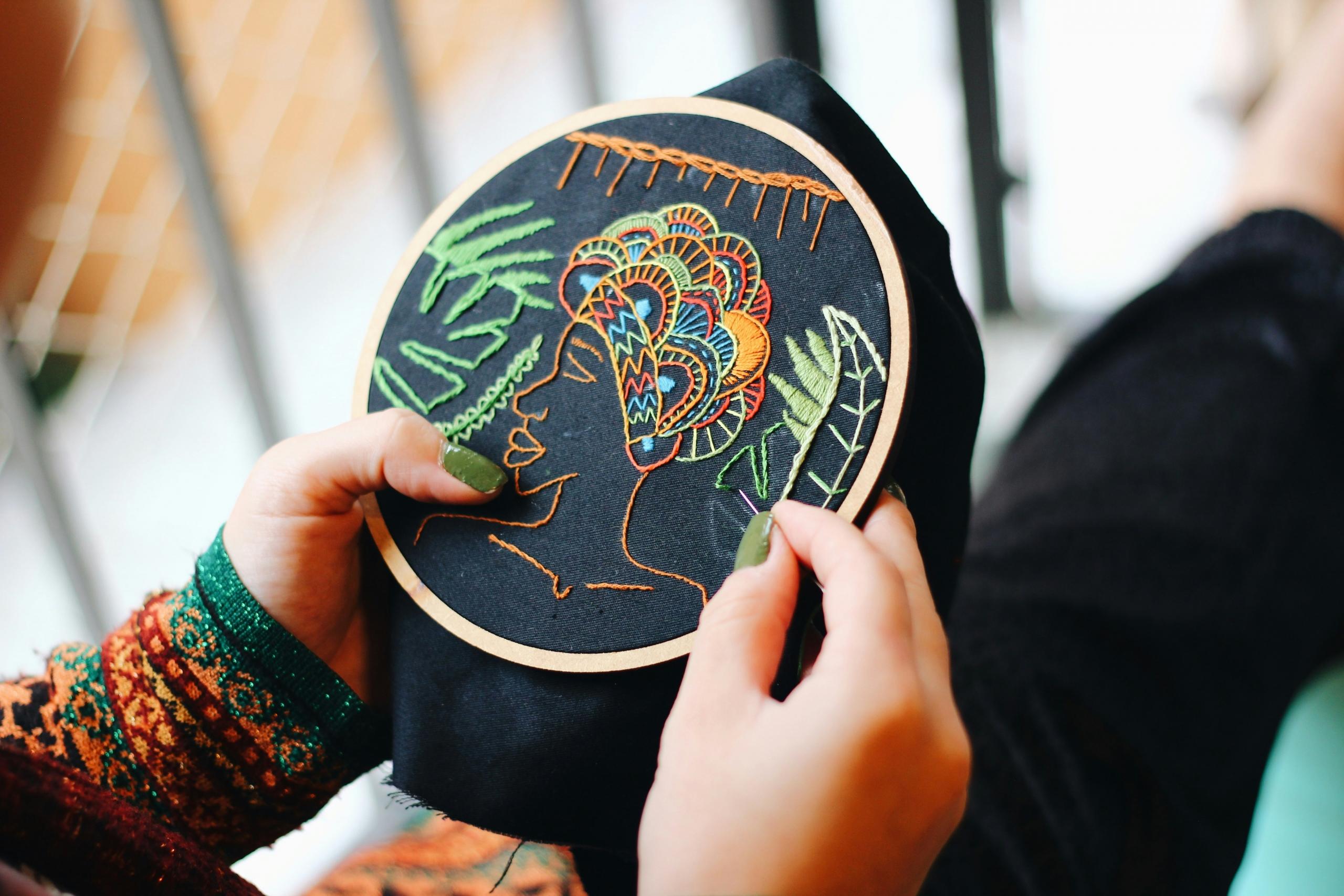
A split stitch is much like a backstitch, only you come up within the last stitch and split it as you come up.
Immerse yourself into the lengthy history of embroidery!
Surface stitches for filling in shapes
You will not only need to draw the shapes, but fill them in. Here are a few stitches that can help you with that:
- Satin stitch: though it looks simple, satin stitch is a little tricky to do cleanly. Be very careful when setting the next stitch to get the edges nicely lined up.
- Herringbone stitch: ideal for leaves, this easy stitch looks lovely in a silky embroidery floss.
- Trellis stitch, or Jacobean couching stitch: a two-part stitch technique, you are laying down a trellis in single long stitches and couching the meeting points with small cross-stitches. Lovely for crewel or Jacobean work and doodle embroidery.
Counted Work
Counted-stitch embroidery is called that because you are working from a pattern and sometimes have to count the stitches of one colour to make sure you are sticking to it. It’s the colour-by-numbers of the embroidery world, but the effects are often quite stunning.
- Cross-stitch:
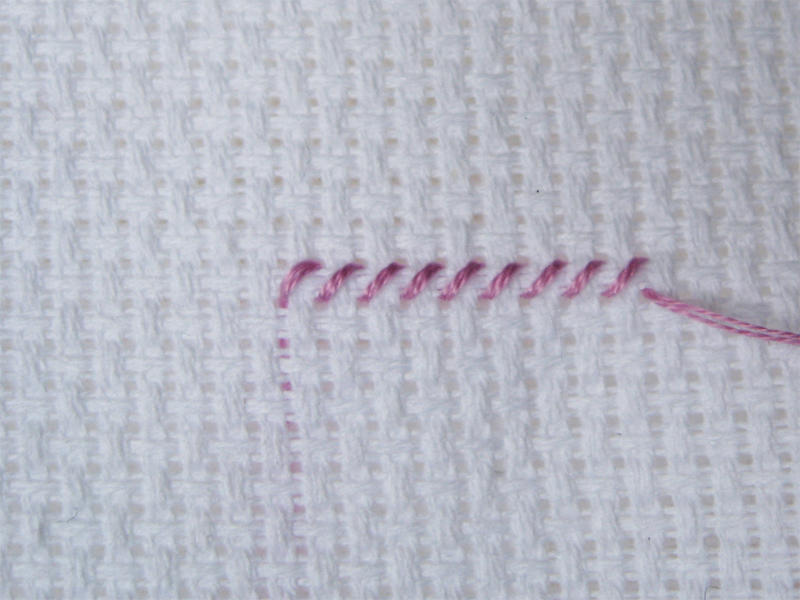
cross-stitch - little crosses - is the most common embroidery stitch today; you will be hard-pressed to find embroidery magazines that are specialised in anything else. It’s a quick way to make letters and figures, and there are plenty of adorable patterns for pixellated creatures to spruce up your towels, cushions and the collars of your shirts.
Discover what supplies you need for a complete embroidery kit...
Embroidery Techniques from Around the World
Each culture combined different stitches and colours to create their own special embroidery techniques.
Ribbon Embroidery
Silk ribbon embroidery originated in France in the 18th century. It makes delightful, three-dimensional designs and is relatively quick to make. A lot of the stitches are the same as for thread embroidery, but there are a few unique ones as well.
Hardanger: A Norwegian Whitework technique
Hardanger is a fairly popular whitework technique that includes various embroidery types, from satin stitch to cut-and-drawn-work (where threads from the embroidery fabric are cut and drawn out, then gathered together to make patterns) to needle-weaving.
Find sewing classes for beginners near me here.
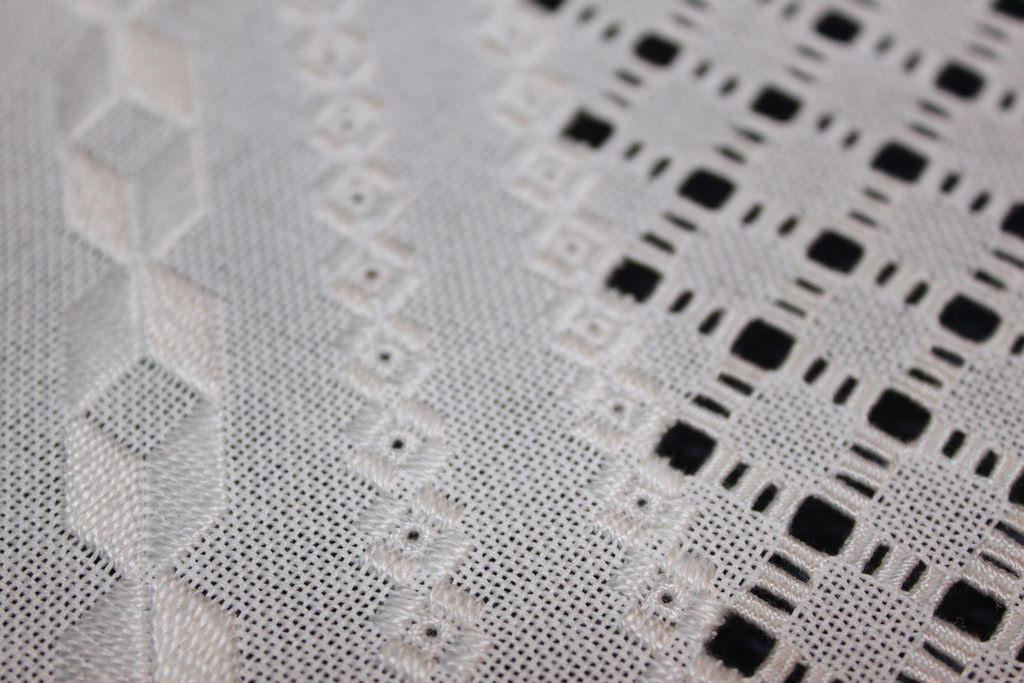
Swedish huck embroidery
Huck weaving or Swedish huck is a needle-weaving technique - the needle is passed forward over and under the warp and weft of the embroidery fabric to make patterns. It has a lovely rustic feel, perfect for half-curtains, kitchen towels or cuff embroidery.
Hungarian redwork
The bold, thick, almost geometric floral patterns of Hungarian redwork look gorgeous on linen - for tablecloths, sheets, or even short, flaring skirts.
Needle painting: satin-stitch Chinese embroidery
Who hasn’t admired the beautiful embroidery of Chinese court dresses, slippers, and baldachins? These brilliant designs with their subtle shading are almost entirely done in satin stitch, though some styles use chain stitch as well as a few others. There are several large schools of embroidery that choose their designs and colours according to different criteria.
Discover how you can improve your sewing through complex embroidery patterns.
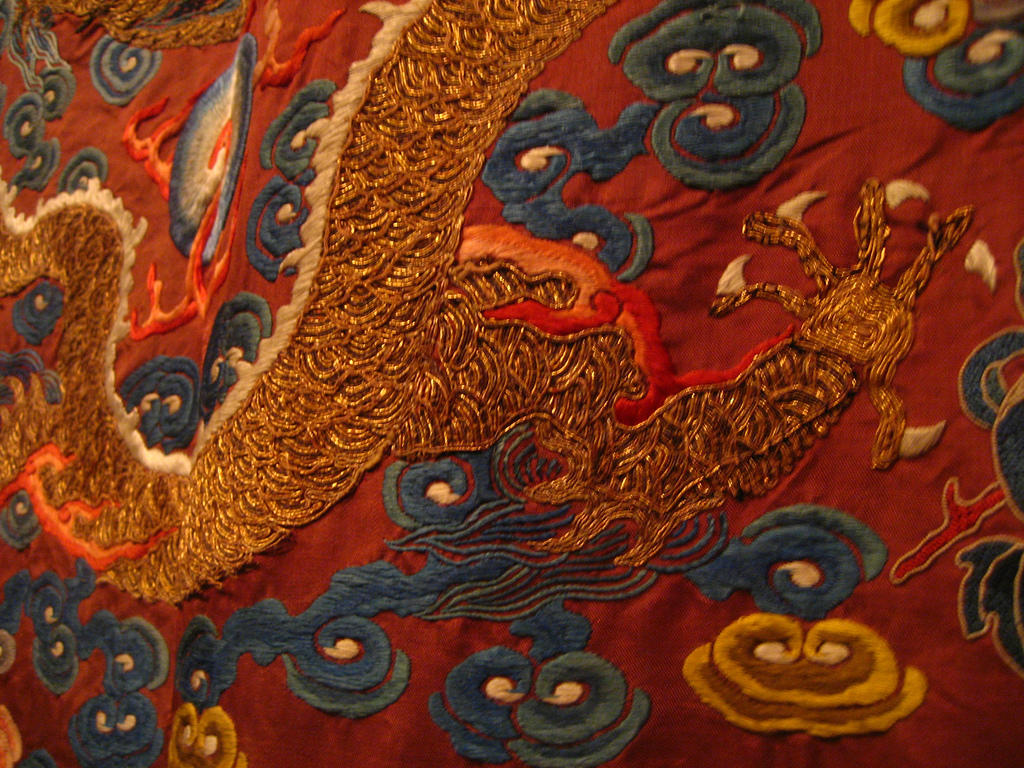
Brazilian embroidery
Brazilian embroidery uses 3-D stitching techniques to make beautiful designs, often floral, that literally pop off the canvas. Various types of buttonhole stitches and knots give that lovely 3-D effect.

Mexican Tenanga embroidery
The Otomi people of the state of Hidalgo in Mexico have long produced beautiful embroidered shirts. When a drought threatened their livelihood in the 1960s, they started commercialising their beautiful embroidery patterns, done in a variation of the herringbone stitch by applying them to tablecloths and pillows and other sellable items. It is characterised by large animal patterns in bright colours.
Indian Shisha (mirror) embroidery
A particularity of traditional embroidery in some parts of India is the integration of tiny mirrors into the embroidery patterns. The mirrors are round and set into brightly-coloured patterns.
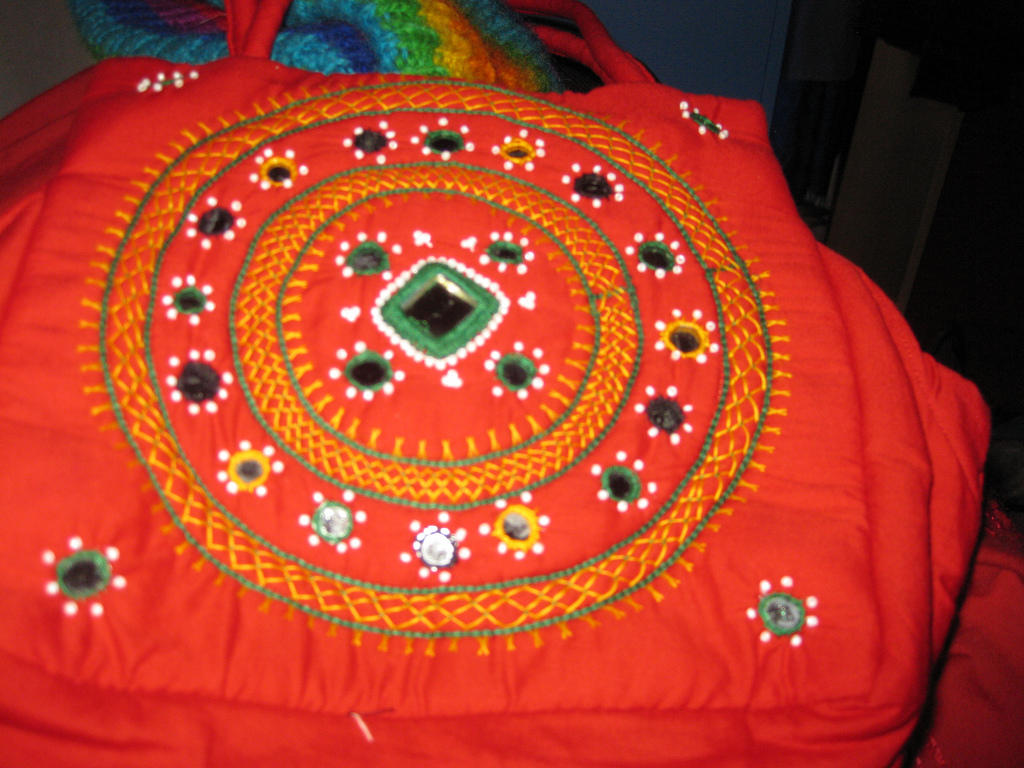
Mending with style: Japanese Shashiko embroidery
The origins of Shashiko are said to lie in the fact that Japanese peasants were only allowed to own dark blue or grey cloth, with stitching no bigger than a grain of rice. With new cloth for clothes being very expensive, peasants would mend their garments using patterns of tiny white running stitches to make them more decorative. Now, Shashiko is wonderful way to pretty up your shirts or blouses or even mend rends in your trousers.
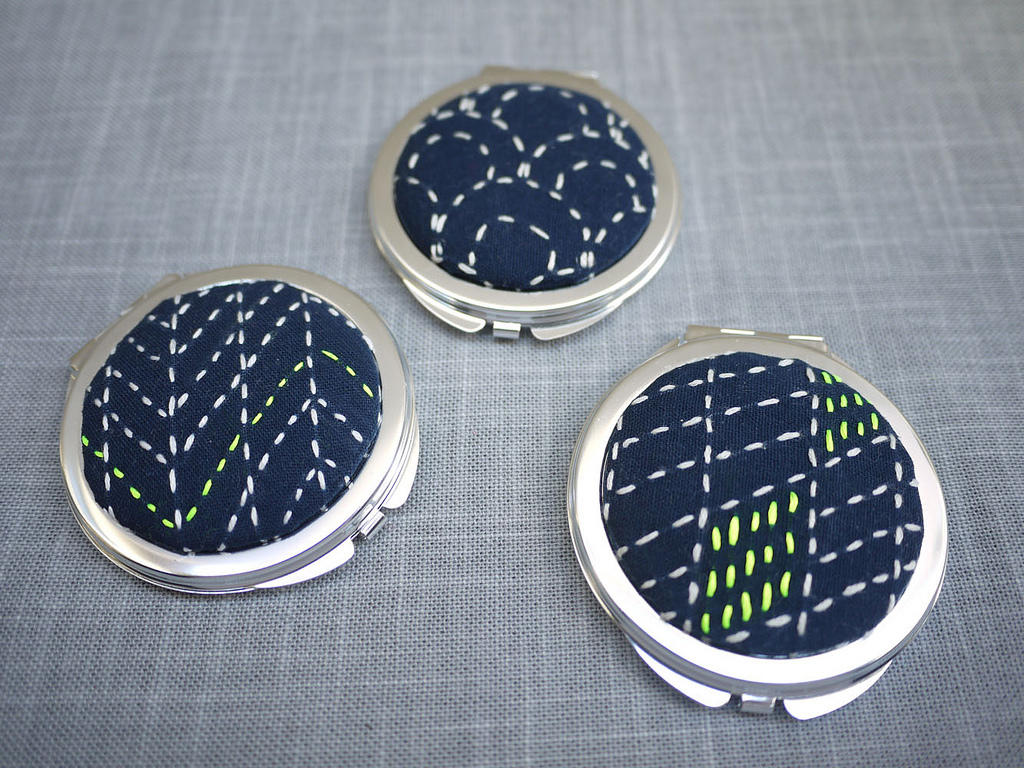
Temari: Japanese embroidered balls
Temari balls are intricately-embroidered balls that were traditionally given as New Year’s gifts in Japan. Though the designs are very intricate, only a few different types of stitches were used, including herringbone stitch.
Why not make some unusual and beautiful Temari Christmas ornaments?
Quillwork: embroidering with porcupine quills
Before Europeans came and flooded the market with colourful beads, many Native American tribes decorated their clothing with needlework made from dyed porcupine quills. The patterns are usually geometric and are a fascinating alternative to European thread embroidery for decorating shirts and boxes.
Discover our best tips and tricks for learning embroidery...
If searching for sewing classes come directly to Superprof and find your sewing classes from Edinburgh to Sewing classes London.
Résumer avec l'IA :

